-
April 8, 2015 Nouvel Building, Auditorium 200
The Artist and his Double. Mathias Goeritz: Personal Mythology, Strategies of Power and the Cold War
Francisco Reyes Palma
Presentation
Chus Tudelilla
Mathias Goeritz in Spain. A Simulator of Identities
Paula Barreiro
Goeritz in Transit: Transatlantic Circuits during the Cold WarJulián Díaz
The Poetics of Altamira and the Construction of Post-war Art CultureFinal round-table discussion and Q&A session
How do we approach the figure of Mathias Goeritz, an artist in constant motion, moving from Germany to North Africa, and then to Spain; or who, after choosing Mexico as his most stable base of operations, also spent time in the USA and Israel? These nomadic wanderings ran in parallel to reflect a figure in a permanent state of biographical reinvention. Goeritz’s time in Spain can be addressed as a counterpoint to his Mexican experience, and without refraining from inscribing him in the global issue of abstraction and the Cold War. Among the question marks over method and archive there is also the unravelling of his logbook of work, devised to confront the post-war period (the production of intimacy that conceives an artistic figure and transforms personal history), followed by the study of his vast international network of epistolary interconnections, akin to the Internet today but dispersed among scores of private archives from his correspondence.
-
April 9, 2015 Nouvel Building, Auditorium 200
The Centrality of the Margin. Emotional Architecture as a Decentred Creative Mechanism
Francisco Reyes Palma
PresentationDaniel Garza Usabiaga
Collaborations in Mathias Goeritz's “Emotional Architecture” Project
Felicity D. Scott
Other Modernisms: Mathias Goeritz and Bernard RudofkyFinal round-table discussion and Q&A sessionThis second session aims to delve deeper into the mechanism of emotional architecture and impress it upon the international architectural debate in the second half of the twentieth century. For Mathias Goeritz Mexico was a strategic place for doing the impossible; his plan to access the centre from the so-called edges proved to be a fruitful strategy. In this process he delineated his experiment on emotional architecture, stretching it over a number of decades and, on more than one occasion spreading it over local borders in the media. Emotional architecture introduced the idea of design as a primordial component, effectively transforming modes of artistic production and certain principles of repetition and saturation inspired by the media and which had an affect on its influence. Yet it was his stockpile of multidisciplinary and undisciplined visions would materialise to form a critique of spatiality within the modern canon and would be one of Goeritz’s main contributions.
-
March 12, 2015 Instituto de México en España. Carrera de San Jerónimo, 46
Related activity
Las torres de Ciudad Satélite (Towers of Satellite City). Presentation of the book by Fernando González Gortázar
Participants: With participation from João Fernandes and Fernando Huici, alongside the author.
The Torres de Ciudad Satélite (Towers of Satellite City) form a sculptural ensemble of five triangular prisms of different colours and sizes, displayed on an esplanade in the north of Mexico City. This ensemble is one of the most distinguished works by artist Mathias Goeritz and architect Luis Barragán – awarded the Pritzker Prize in 1980 – in collaboration with painter Jesús Reyes Ferreira. In this volume, Fernando González compiles vast graphic material expounding the social and cultural value in a work that would become an artistic epicentre in the 1960s, adding accounts and personal documentary to the history of its construction.
Organised by: The Mexican Embassy, The Mexican Institute in Spain, and the Mexican Study Centre UNAM-Spain, in collaboration with Museo Reina Sofía, within the framework of the seminar Mathias Goeritz. Activating Space. An Art of Commotion.
Admission: Free, until full capacity is reached.
Mathias Goeritz. Activating Space. An Art of Commotion
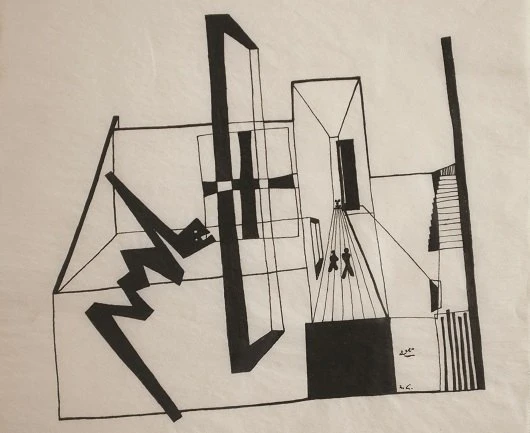
Held on 08 abr 2015
This seminar is the culmination of the exhibition The Return of the Snake. Mathias Goeritz and the Invention of Emotional Architecture and looks to generate a debate centred on the artist Mathias Goertiz as a unique case study with which to understand the phenomena of the translation, reinterpretation and survival of modernity in a new time in history, straight after the war. In a similar vein, together with the seminar Radiations. The Idea of European Art in the Cold War (Museo Reina Sofía, 29 and 30 April), it will introduce the line of research based on the ideas, subjects and life experiences from this time period, which would end in the definition of a new multifocal geopolitical board that is interconnected and far more complex than previously thought by the traditional bipolar history of two antagonistic blocks confronting one another.
The seminar pivots around the concept of “emotional architecture”, put into circulation for the first time in 1953 when the artist opened his Museo experimental El Eco in the Mexican capital. Above and beyond the idea of construction present in a building’s structure, Goeritz’s concept of emotional architecture lead to spaces of recontextualisation in art disciplines, establishing a dialogue between mural painting and sculpture in an anti-functionalist architectural environment. Furthermore, Mathias Goeritz advocated a renewed blueprint of work that traversed the idea of traditional collaboration, favouring instead mechanisms of friendship, exchange and creative loans (the best example being the triad formed by Goeritz, the engineer and architect Luis Barragán and the collector, antiquarian and painter Jesús Reyes Ferreira), in addition to the expanded notion of patronage, which allowed the exponential joining of sensibilities and resources, materialising in works that, while fuelled by historical avant-garde tradition, lead to productions that stood on their own and stood outside the canons of the traditional history of art in central metropolises.
In collaboration with
Instituto de México en España and Centro de Estudios Mexicanos UNAM-España
Organised by
Museo Reina Sofía
Participants
Paula Barreiro. Professor in the Department of Art History at the University of Barcelona. In 2013 she co-directed the international conference Transatlantic Encounters: Avant-garde Discourses in Spain and Latin America in the Museo Reina Sofía. Her publications include, among others, Globalization and Art in the Twentieth Century (Third Text, 2013) and Crítica(s) de arte: discrepancias e hibridaciones de la Guerra Fría a la globalización (Critique(s) of Art: Discrepancies and Hybridisations from the Cold War to Globalisation) (Cendeac, 2014), recently co-edited with Julián Díaz Sánchez.
Julián Díaz Sánchez. Professor of Art History at the University of Castilla La Mancha. He is the author of titles such as La oficialización de la vanguardia artística en la postguerra española [el informalismo en la crítica de arte y los grandes relatos](The Formalisation of the Artistic Avant-garde in Post-war Spain [Informalism in Art Critique and Grand Narratives) (UCLM, 1999), Políticas, poéticas y prácticas artísticas. Apuntes para una historia del arte (Politics, Poetics and Artistic Practices. Notes for a History of Art) (Catarata, 2009) and La idea de arte abstracto en la España de Franco (The Idea of Abstract Art in Franco’s Spain) (Cátedra, 2013).
Daniel Garza Usabiaga. Art historian and author of the recent monograph Mathias Goeritz y la arquitectura emocional. Una revisión crítica [1952-1968] (Mathias Goeritz and Emotional Architecture. A Critical Review [1952-1968]) (Vanilla Planifolia, 2012). He has worked as a curator at Museo de Arte Moderno (MAM), Mexico City, and is currently curator of visual arts at the Museo Universitario del Chopo, also in Mexico City.
Francisco Reyes Palma. Art historian, critic and researcher at the National Centre for Research, Documentation and Information on Plastic Arts at the National Institute of Fine Arts, Mexico. A founding member and president of CURARE. Critical Space for the Arts. He is also the author of Mathias Goeritz (La Caja Negra Ediciones, 2011), and numerous other works, and curator of the exhibition The Return of the Snake. Mathias Goeritz and the Invention of Emotional Architecture (Museo Reina Sofía, 2015). Chair person and moderator.
Felicity Scott. Associate professor of architecture and director of the programme in Critical, Curatorial and Conceptual Practices in Architecture at the Graduate School of Architecture, Planning and Preservation from the University of Columbia. She is also a founding co-editor of the journal Grey Room and author of Architecture or Techno-Utopia: Politics After Modernism (MIT Press, 2007), as well as multiple articles in exhibition catalogues and magazines such as Artforum and Texte zur Kunst.
Chus Tudelilla. Art historian, independent curator and art critic. Her noteworthy publications include Mathias Goeritz. Recuerdos de España [1940-1953] (Mathias Goeritz. Memories of Spain [1940-1953] (Prensas Universitarias de Zaragoza, 2014). She has also regularly collaborated with the magazines Arte y Parte and MAKMA.
Más actividades

CLINIC 2628. A Community of Writing and Research in the Arts
February – October 2026
Clinic 2628 is a project which supports and brings together writings which stem from the intention to offer a space and sustainable time for research work in art and culture. Framed within an academic context which is increasingly less receptive to the forms in which thinking happens and is expressed, the aim is to rescue the academic from its neoliberal trappings and thus recover the alliance between precision and intuition, work and desire. A further goal is to return writing to a commons which makes this possible through the monitoring of processes and the collectivisation of ideas, stances, references and strategies.
The endeavour, rooted in a collaboration between the Museo Reina Sofía’s Studies Directorship and the Artea research group, via the i+D Experimenta project, is shaped by three annual editions conceived as spaces of experimentation, discussion and a demonstration of writings critical of what is put forward by today’s academia.
What forces, forms and processes are at play when writing about art and aesthetics? In academia, in museums and in other cultural institutions, the practice of writing is traversed by productivist logics which jeopardise rhythms of research and experimentation. The imposition of both scientism inherent in the structure of “the paper” and the quantifying of results which demand a criterion of quality and visibility sterilise and smoothen, from the outset, the coarseness that is particular to writing understood from the concrete part of language: phonic, graphic, syntactic and grammatical resistance connecting the language user to the community the language unites and activates. They also sterilise the roughness enmeshed in the same desire to write, the intuitive, clear and confusing pathways that once again connect the writer to those reading and writing, participating in a common good that is at once discovered and produced.
The progressive commercialisation of knowledge propelled by cognitive capitalism moves further away from the research and production of knowledge in artworks and artistic languages and practices. The work of curators and archive, criticism, performances and essays formerly saw a horizon of formal and emotional possibilities, of imagination that was much broader when not developed in circumstances of competition, indexing and impact. Today, would it be possible to regain, critically not nostalgically, these ways; namely, recovering by forms, and by written forms, the proximity between art thinking and its objects? How to write in another way, to another rhythm, with no more demands than those with which an artwork moves towards different ways of seeing, reading and being in the world?

The (legal) person and the legal form. Chapter II
8, 12, 15 January, 2026 – 16:00 to 19:00
As part of the Studies Constellation, the Study Directoship’s annual fellowship, art historian and theorist Sven Lütticken leads the seminar The (Legal) Person and the Legal Form: Theoretical, Artistic, and Activist Commitments to foster dialogue and deepen the hypotheses and questions driving his research project.
This project, titled Unacting Personhood, Deforming Legal Abstraction, explores the dominance of real abstractions—such as exchange value and legal form—over our processes of subjectivation, and asks how artistic practices can open up alternative ways of representing or performing the subject and their legal condition in the contemporary world.
The seminar consists of eight sessions, divided into three chapters throughout the academic year. While conceived as non-public spaces for discussion and collective work, these sessions complement, nourish, and amplify the public program of the Studies Constellation.
In this second chapter of the seminar, the inquiry into the aesthetics and politics of legal form continues with three sessions that pick up the discussions held in Chapter I but propose new lines of flight. The first session focuses on international law via the writings of the British author China Miéville, which allows us to reconsider the notion of the legal form –following Evgeny Pashukanis— and, through it, a variety of (people’s) tribunals. While the crucial concept of the legal person –as the right-holder central to the form of law— was debated in Chapter I, the second session focuses on attempts to extend personhood not (just) to corporations, but rather to nonhuman animals or ecosystems. Finally, the third session poses the question: how can groups and networks use officially recognized organizational forms (such as the foundation or the cooperative) and/or use a collective persona (without necessarily a legal “infrastructure” to match) to act and represent themselves?

Oliver Laxe. HU/هُوَ. Dance as if no one were watching you
Tuesday, 16 December 2025 – 7pm
As a preamble to the opening of the exhibition HU/هُوَ. Dance as if no one were watching you, film-maker Oliver Laxe (Paris, 1982) engages in conversation with the show’s curators, Julia Morandeira and Chema González, touching on the working processes and visual references that articulate this site-specific project for the Museo Reina Sofía. The installation unveils a new programme in Space 1, devoted from this point on to projects by artists and film-makers who conduct investigations into the moving image, sound and other mediums in their exhibition forms.
Oliver Laxe’s film-making is situated in a resilient, cross-border territory, where the material and the political live side by side. In HU/هُوَ. Dance as if no one were watching you, this drift is sculpted into a search for the transcendency that arises between dancing bodies, sacred architectures and landscapes subjected to elemental and cosmological forces. As a result, this conversation seeks to explore the relationship the piece bears to the imagery of ancient monotheisms, the resonance of Persian Sufi literature and the role of abstraction as a resistance to literal meaning, as well as looking to analyse the possibilities of the image and the role of music — made here in collaboration with musician David Letellier, who also works under the pseudonym Kangding Ray — in this project.
These inaugural conversations, part of the main working strands of the Museo’s Public Programmes Area, aim to explore in greater depth the exhibition narratives of the shows organised by the Museo from the perspective of artists, curators and specialists.
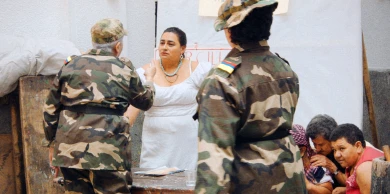
Manuel Correa. The Shape of Now
13 DIC 2025
The Shape of Now is a documentary that explores the challenges and paradoxes of memory, reparation and post-conflict justice, extending a defiant and questioning gaze towards the six-decade armed conflict in which the Colombian State, guerrillas and paramilitary groups clashed to leave millions of victims in the country. The screening is conducted by the Aesthetics of Peace and Desertion Tactics study group and includes a presentation by and discussion with the film’s director, Manuel Correa.
The film surveys the consequences of the peace agreements signed in 2016 between the Colombian State and the FARC guerrilla organisation through the optics of different victims. It was recorded shortly after this signing, a time in which doubts lingered over the country’s future, with many groups speculating in the narration. Correa harnesses the power of images, visual and bodily memory, fiction and re-staging as tools for understanding the conflict, memory and healing, as well as for the achievement of a just peace that acknowledges and remembers all victims.
The activity is framed inside the research propelled by Aesthetics of Peace and Desertion Tactics, a study group developed by the Museo’s Study Directorship and Study Centre. This annual group seeks to rethink, from a theoretical-critical and historical-artistic perspective, the complex framework of concepts and exercises which operate under the notion of pacifism. A term that calls on not only myriad practices ranging from anti-militarism and anti-war movements to activism for non-violence, but also opens topical debates around violence, justice, reparation and desertion.
Framed in this context, the screening seeks to reflect on propositions of transitional and anti-punitive justice, and on an overlapping with artistic and audiovisual practices, particularly in conflicts that have engendered serious human rights violations. In such conflicts, the role played by audiovisual productions encompasses numerous challenges and ethical, aesthetic and political debates, among them those related to the limits of representation, the issue of revictimisation and the risks involved in the artistic commitment to justice. These themes will be addressed in a discussion held after the session.
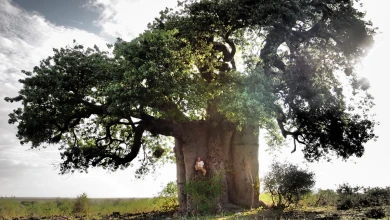
Francisco López and Barbara Ellison
Thursday, 11 December - 8pm
The third session in the series brings together two international reference points in sound art in one evening — two independent performances which converse through their proximity here. Barbara Ellison opens proceedings with a piece centred on the perceptively ambiguous and the ghostly, where voices, sounds and materials become spectral manifestations.
This is followed by Francisco López, an internationally renowned Spanish sound artist, who presents one of his radical immersions in deep listening, with his work an invitation to submerge oneself in sound matter as a transformative experience.
This double session sets forth an encounter between two artists who, from different perspectives, share the same search: to open ears to territories where sound becomes a poetic force and space of resistance.
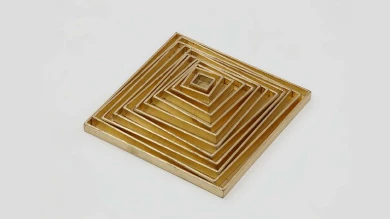
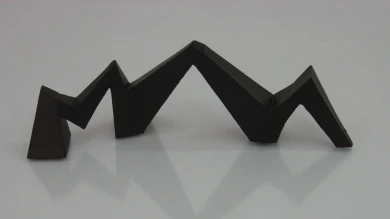



![Miguel Brieva, ilustración de la novela infantil Manuela y los Cakirukos (Reservoir Books, 2022) [izquierda] y Cibeles no conduzcas, 2023 [derecha]. Cortesía del artista](https://recursos.museoreinasofia.es/styles/small_landscape/public/Actividades/ecologias_del_deseo_utopico.jpg.webp)
![Ángel Alonso, Charbon [Carbón], 1964. Museo Reina Sofía](https://recursos.museoreinasofia.es/styles/small_landscape/public/Actividades/perspectivas_ecoambientales.jpg.webp)